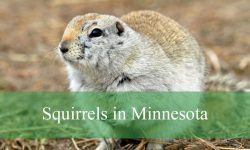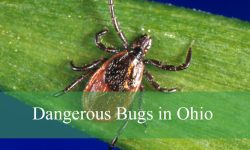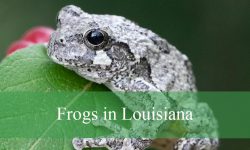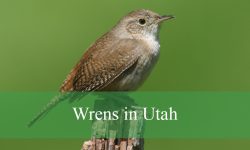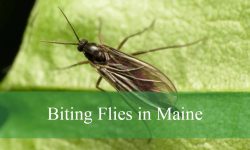Bobcats in Ohio are fascinating creatures. They live quietly in forests, hills, and even near suburban areas, but most people rarely see them. Despite their small size compared to other wild cats, bobcats are skilled hunters and very adaptable. Learning how they survive and thrive in Ohio helps us understand the balance of nature and the resilience of wildlife.
Historically, bobcats in Ohio faced many challenges. Hunting and habitat loss caused their numbers to drop drastically during the 1900s. For a long time, sightings were rare. Thanks to laws protecting them and the regrowth of forests, bobcats have made a comeback. Today, they are an important part of Ohio’s ecosystems and a sign of healthy wildlife.
Types of Bobcats in Ohio
Bobcats in Ohio belong to a single species, Lynx rufus, but there are slight variations in size, color, and habitat preference depending on the region. While Ohio does not have distinct subspecies, individual bobcats can show differences based on genetics, diet, and environment. Understanding these variations helps wildlife enthusiasts and researchers identify and study these elusive cats more effectively.
Northern Ohio Bobcats
Northern Ohio bobcats tend to inhabit the forested areas near the Great Lakes and surrounding hills. They are often slightly smaller and lighter in color compared to their southern counterparts. Their habitat includes dense forests, wetlands, and areas with heavy understory, which provide cover for hunting rabbits, squirrels, and birds. These bobcats are highly adapted to colder winters and can be more secretive due to human development in the north.
Southern Ohio Bobcats
Bobcats in southern Ohio are typically larger and darker in color. They live in mixed hardwood forests, river valleys, and rolling hills. The southern regions provide abundant prey, and these bobcats are known for traveling longer distances along forested corridors to maintain territories and find mates. Their agility and camouflage make them effective hunters even in rugged terrains.
Eastern and Western Ohio Bobcats
In eastern Ohio, bobcats often inhabit hilly, forested regions with rocky outcrops and streams. These areas offer ideal denning sites and excellent hunting grounds. Western Ohio bobcats, while less numerous, adapt to fragmented forests, farmland edges, and smaller wooded areas. They demonstrate remarkable adaptability, sometimes venturing closer to suburban areas when prey is available.
Behavioral Differences Across Ohio
Although all bobcats in Ohio share similar hunting and survival strategies, slight behavioral differences exist based on region. Northern bobcats may be more nocturnal to avoid human activity, while southern bobcats might range more widely due to plentiful prey and larger forested habitats. Despite these differences, all bobcats maintain solitary, territorial lifestyles and display the stealth and patience that make them successful predators.
Why Understanding Types Matters
Studying the different types of bobcats in Ohio helps scientists track population health, monitor habitat use, and assess conservation efforts. It also allows wildlife enthusiasts to better recognize bobcats in various regions and understand their role in local ecosystems. While subtle, these variations highlight the adaptability and resilience of bobcats across Ohio’s diverse landscapes.
Where Bobcats in Ohio Live
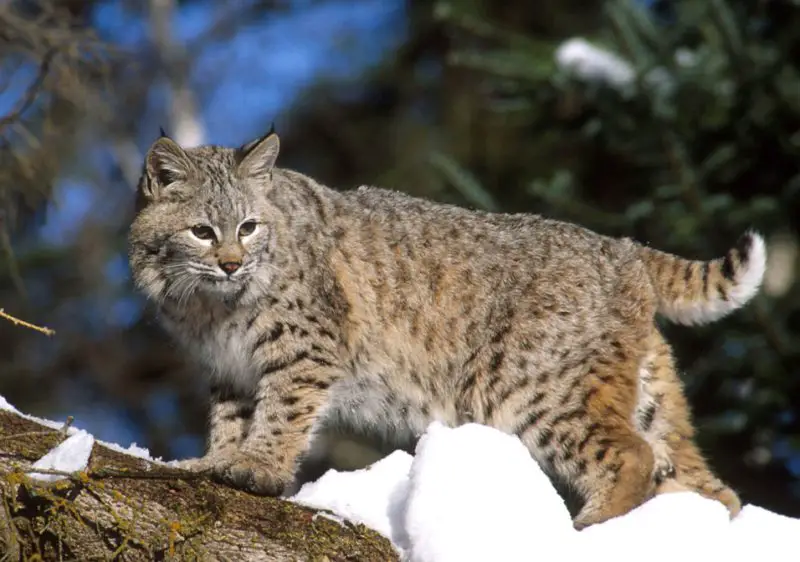
Bobcats in Ohio like forests with thick undergrowth. They prefer areas with trees, bushes, and streams, which give them cover for hunting and places to hide from danger. Hills, valleys, and river areas in southern and eastern Ohio are especially popular. These areas provide food, shelter, and safe places to raise their young.
Although they prefer wild forests, bobcats are adaptable. They sometimes live near farms or the edges of towns where small animals are easy to find. They need paths of trees or brush to move safely from place to place. These corridors help them stay connected with other bobcats, find mates, and avoid conflicts with other predators.
How Bobcats in Ohio Hunt
Bobcats in Ohio are mainly hunters of small animals. They eat rabbits, squirrels, mice, and birds. Sometimes they will eat reptiles or insects if food is scarce. Unlike wolves or coyotes, bobcats hunt alone. They use stealth and patience, hiding and waiting for the right moment to pounce.
Bobcats are most active during dawn and dusk. This helps them avoid people and larger predators while giving them the best chance to catch food. Their sharp eyes, ears, and whiskers allow them to detect even small movements in the forest. In winter, when some prey hide or are under snow, bobcats may change their diet or hunt birds and other small animals that are still active.
Ohio bobcats carefully manage their energy. They often rest for long periods and hunt in short bursts. This helps them stay strong and successful in finding food.
Behavior of Bobcats in Ohio
Bobcats in Ohio are solitary and territorial. They mark their area with scent or scratches on trees to warn other bobcats. This behavior helps them avoid fights and ensures enough food and shelter.
Breeding is important for survival. Bobcats usually mate between February and March. Females give birth to one to six kittens in dens hidden in bushes, logs, or rock crevices. The mother takes care of the kittens and teaches them to hunt and survive in the wild.
Bobcats are cautious around humans. They avoid towns and roads and often hunt at night to stay safe. Their ability to sense danger and adapt their behavior allows them to live near humans without many problems.
Bobcats and Other Wildlife
In Ohio, bobcats share their habitats with animals like coyotes, foxes, and owls. They avoid competition by hunting different types of prey or staying in dense forest areas where others cannot easily follow.
Bobcats are also important for the ecosystem. By keeping populations of rabbits and rodents in check, they prevent overgrazing and help maintain healthy forests. Their presence indirectly helps birds, amphibians, and plants by keeping the environment balanced.
Scientists use bobcats as indicators of forest health. If bobcats are thriving, it usually means the forest has enough food, cover, and minimal human disturbance.
Challenges for Bobcats in Ohio
Bobcats in Ohio face several challenges. Roads and highways can block their movement and sometimes cause accidents. Urban growth and farming can reduce their habitat. Illegal hunting or trapping, although less common, can still be a threat.
Climate change also affects bobcats. Changes in weather can make food harder to find or dens less safe. Deep snow or long dry periods can challenge their hunting and survival. Despite this, bobcats are adaptable and can change their behavior or territory to survive.
How Humans Help Bobcats
Conservation efforts in Ohio have helped bobcats recover. Wildlife agencies protect habitats, monitor populations, and educate the public about living alongside bobcats. Most interactions between humans and bobcats are indirect, as bobcats avoid people.
Residents are encouraged to secure pets, not feed wildlife, and report sightings. Citizen science programs allow locals to share photos and observations, helping researchers understand bobcat populations and behavior. These efforts ensure bobcats can continue to thrive in Ohio.
Interesting Facts About Bobcats in Ohio
Bobcats in Ohio are excellent hunters and climbers. Their short tails, tufted ears, and spotted fur help them hide in forests. They can leap several meters to catch prey or avoid danger. Their movements are quiet and deliberate, which makes them hard to spot.
Male bobcats have larger territories than females, and some areas overlap when food is plentiful. They use forest corridors to connect with other bobcats, which helps maintain genetic diversity. Bobcats can adjust hunting strategies based on prey and season, showing their intelligence and flexibility.
The Role of Bobcats in Ohio’s Environment
Bobcats are important for keeping the ecosystem balanced. They prevent overpopulation of small mammals and help maintain vegetation health. This indirectly benefits other animals and plants.
Seeing bobcats in the wild is rare, but it reminds us of the value of preserving nature. Their survival shows that with the right protection and awareness, humans and wildlife can coexist peacefully.
Tips to Spot Bobcats in Ohio
Spotting bobcats in Ohio can be a rare and exciting experience. These elusive predators are naturally secretive and avoid human contact, but understanding their habits and preferred environments increases your chances of observing them safely.
Look for Signs of Bobcats
Even if you don’t see a bobcat directly, signs of their presence can be found in the wild. Tracks, scat, claw marks on trees, and disturbed vegetation often indicate that a bobcat has passed through. Northern Ohio forests and river valleys are particularly good areas to look for these signs due to dense cover and plentiful prey.
Observe During Dawn or Dusk
Bobcats in Ohio are most active during dawn and dusk, known as crepuscular hours. During these times, they hunt small mammals, birds, and reptiles while avoiding humans and larger predators. Wildlife photographers and nature enthusiasts often have the best chance of spotting bobcats during these early morning or late evening hours.
Focus on Dense Cover and Forest Edges
Dense forests, brushy understory, and forest edges are prime habitats for bobcats in Ohio. These areas provide excellent cover for stalking prey and safe spots for resting or raising kittens. Keeping quiet and moving slowly near these environments increases the likelihood of observation.
Use Remote Cameras and Observation Points
Many wildlife researchers rely on remote cameras to study bobcats in Ohio. These cameras capture movement without disturbing the animals. Setting up observation points near known trails or water sources, while maintaining distance, can also allow for safe and effective viewing.
Understand Seasonal Patterns
Season affects bobcat activity and visibility. In winter, bobcats may hunt in areas with less snow cover and may be more active during daylight hours to conserve energy. Spring and summer are breeding and kitten-rearing seasons, so bobcats are more cautious, and sightings can be less frequent.
Respect Wildlife and Safety
When trying to observe bobcats in Ohio, always respect their space. Do not attempt to approach, feed, or corner a bobcat. Observing from a distance with binoculars, cameras, or from a vehicle ensures both your safety and the well-being of the animal.
By understanding these tips and the natural behaviors of bobcats in Ohio, wildlife enthusiasts can enjoy observing one of the state’s most elusive predators while supporting conservation efforts.
Conclusion
Bobcats in Ohio are a remarkable example of adaptability and survival. They live quietly in forests, hills, and edges of towns, hunting skillfully and avoiding danger. Their behavior, diet, and reproductive strategies allow them to thrive despite challenges like roads, urban growth, and climate change.
Conservation and awareness are key to their continued success. Protecting habitats, educating the public, and minimizing conflicts help bobcats survive. They are more than predators—they are a vital part of Ohio’s ecosystems and a symbol of the wild, reminding us how nature adapts and persists.
Understanding bobcats in Ohio gives us insight into the balance of wildlife, the challenges of coexistence, and the importance of protecting natural habitats. Observing these elusive animals, even indirectly, connects us to the wild side of Ohio and highlights the value of conservation.
FAQs About Bobcats in Ohio
What are bobcats in Ohio, and where are they found?
Bobcats in Ohio are medium-sized wild cats that live mainly in forests, hills, and areas near streams. They are elusive and prefer dense vegetation for cover, but they can also be found near farmland and suburban edges where prey is available. Southern and eastern Ohio, with its mixed hardwood forests and river valleys, is particularly suitable for these animals.
How do bobcats in Ohio hunt and what do they eat?
Bobcats in Ohio are carnivorous and primarily hunt small mammals such as rabbits, squirrels, and mice. Birds, reptiles, and occasionally insects may also be part of their diet. They hunt alone, using stealth and patience to ambush prey, often during dawn and dusk. Seasonal changes can affect their diet, with winter forcing them to adapt to limited prey availability.
Are bobcats in Ohio dangerous to humans?
Bobcats in Ohio are generally shy and avoid humans. They are not considered a threat unless cornered or provoked. Most encounters are indirect, with humans observing tracks, scat, or camera trap footage. Bobcats prefer to hunt at night or in secluded areas, minimizing the chances of conflict.
How do bobcats in Ohio survive in areas with humans?
Bobcats in Ohio adapt to human presence by being cautious and choosing areas with cover. They may use wooded corridors or brush to move safely and avoid roads or populated areas. Avoiding humans, hunting at dawn or dusk, and relying on their stealth allows bobcats to survive even near farms and suburban zones.
How do bobcats in Ohio reproduce and care for their young?
Bobcats usually breed between February and March. Females give birth to one to six kittens in dens hidden in dense brush, hollow logs, or rock crevices. The mother protects the young and teaches them hunting skills, territory navigation, and survival techniques until they are ready to live independently.
What role do bobcats in Ohio play in the ecosystem?
Bobcats help maintain balance by controlling populations of small mammals such as rabbits and rodents. This prevents overgrazing, promotes forest regeneration, and indirectly supports other wildlife like birds and amphibians. They serve as indicators of healthy ecosystems, with their presence reflecting sufficient prey, cover, and minimal human disturbance.
What challenges do bobcats in Ohio face?
Bobcats in Ohio face habitat fragmentation due to roads, urban growth, and agriculture. Vehicle collisions, illegal hunting, and climate changes are additional threats. Despite these challenges, bobcats are highly adaptable and can shift territories or modify their behavior to survive.
How are bobcats in Ohio monitored and conserved?
Wildlife agencies monitor bobcats using camera traps, tracking, and citizen reports. Conservation efforts include habitat protection, hunting regulations, and public education. Citizen science programs encourage residents to report sightings, helping researchers track population trends and behavior.
Can bobcats in Ohio live in suburban areas?
Yes, bobcats can survive near suburban areas as long as there is sufficient cover, food, and safe corridors for movement. They generally remain hidden, hunting mostly at night and avoiding direct interaction with humans.
How can I safely observe bobcats in Ohio?
The best way to observe bobcats in Ohio is indirectly through camera traps, wildlife photography, or guided tours in forested areas. Observing tracks, scat, or signs of hunting activity is safer and less disruptive than attempting to approach them directly.

